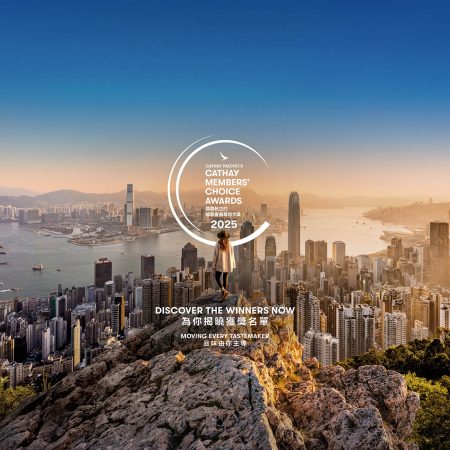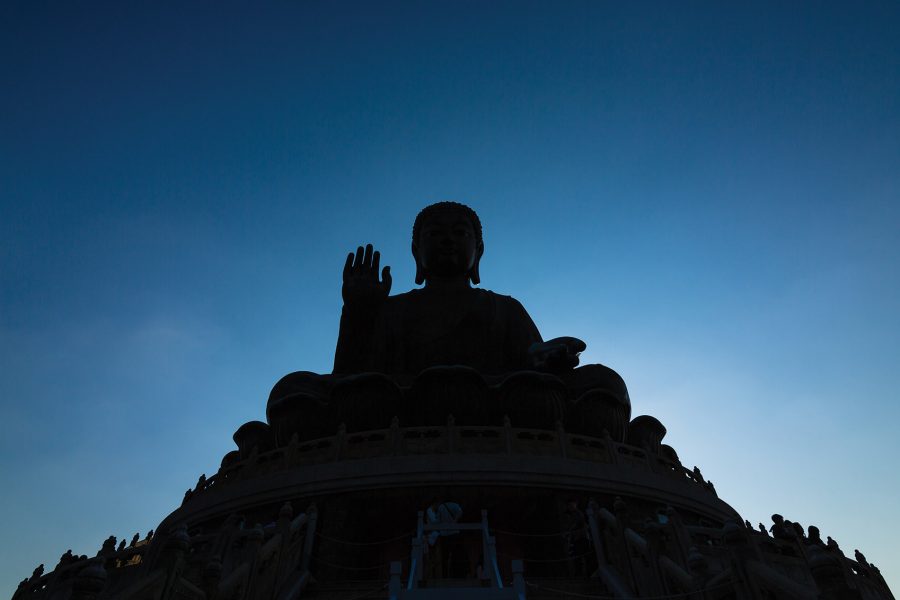It's Buddha’s birthday this month, so what better way to celebrate than by tracking down some of the revered figure’s most fascinating statues around Asia? The variation may surprise you. Some are so massive you couldn’t miss them if you tried. Others are better known for their exquisite carving details and mysterious origins. But one thing’s clear: no matter where you go in the region, a Buddha statue will be waiting with a calm expression, an open palm or a big-bellied laugh.
1. Tian Tan Buddha, Hong Kong SAR
No list would be complete without Hong Kong’s famous iteration. At 34 metres tall, the Tian Tan Buddha (known locally as the Big Buddha) sits peacefully on an open lotus flower among the forested peaks of Lantau Island. This striking statue is relatively young – completed just over 30 years ago in 1993. Admire it from afar while riding the Ngong Ping 360 cable car or climb the 268 steps to see its hands and toes up close. While there, explore the nearby Ngong Ping Village, visit the peaceful Po Lin Monastery and wander along the meditative Wisdom Path.
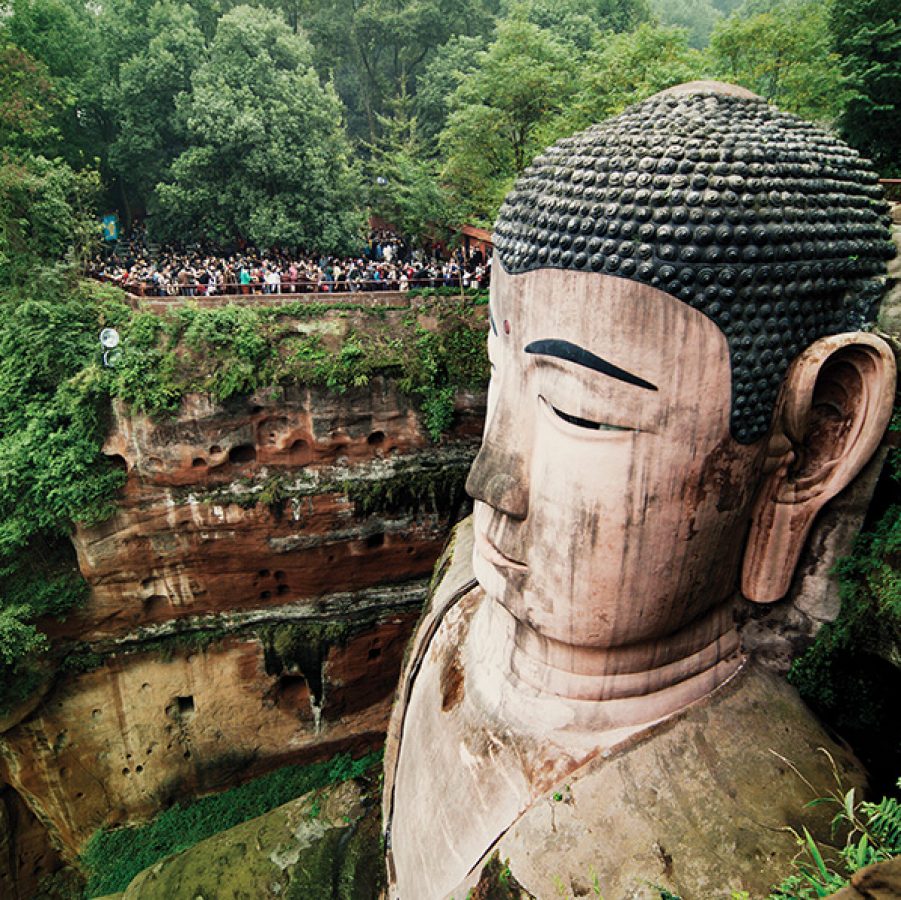
Credit: Cavan Images/Getty Images
2. Leshan Giant Buddha, Leshan, Chinese Mainland
Etched into a red sandstone cliffside in the Unesco-listed Leshan Scenic Area, about two hours south of Chengdu, this Maitreya statue is the world’s largest stone Buddha. It’s 71 metres high – equivalent to 16 double-decker buses on top of each other – and can seat two people on each pinky toenail. This remarkable statue would be considered a feat of engineering in modern times, so it’s all the more impressive that it dates to 713 AD, when a monk named Hai Tong spearheaded the project to protect passing ships and quell the turbulent rivers below. You can see the statue from different angles by joining a boat trip or climbing the steep and narrow pathway that traces the statue.
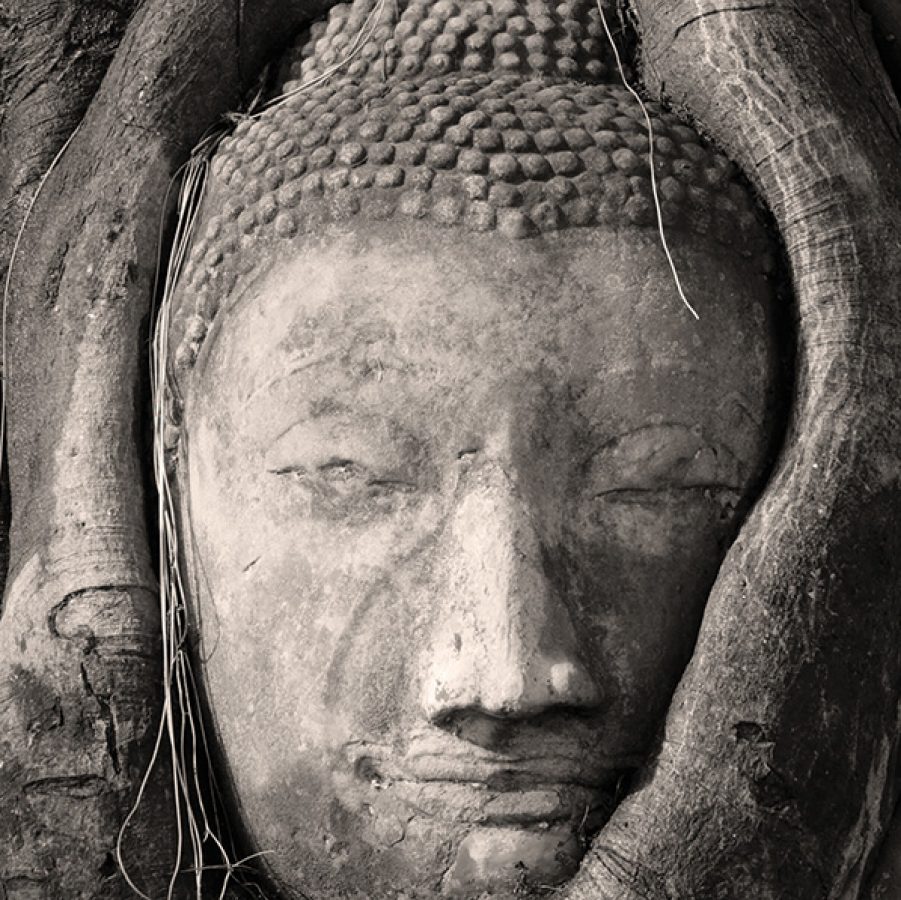
Credit: Enviromantic/Getty Images
3. Buddha head in tree roots, Ayutthaya, Thailand
In the Unesco-listed Ayutthaya Historical Park, the 14th-century capital of the eponymous Ayutthaya Kingdom about 80km north of Bangkok, there’s a bodhi tree with a rather unusual feature: a Buddha head, entangled in its roots. Its origins remain a mystery, but a few theories exist. Some believe Burmese invaders decapitated Buddhist statues during an invasion in the 1700s and left the head in the rubble. Others say it broke off Wat Phra Mahathat, the most important temple in the complex, and the roots grew around its face over the centuries.
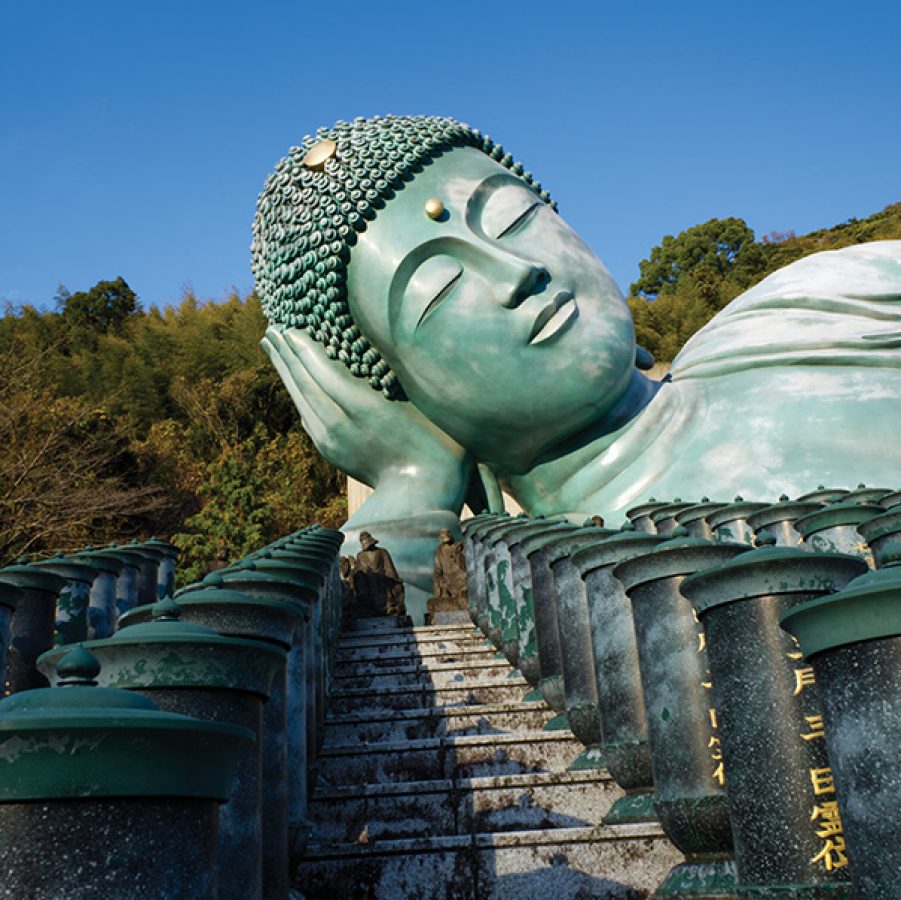
Credit: Pics3/Getty Images
4. Reclining Buddha at Nanzo-in, Sasaguri, Japan
Covered in verdigris, this graceful bronze statue reclines on its side (symbolising Buddha entering Nirvana) in the lush Nanzo-in temple complex, just east of Fukuoka. The enormous structure, which stretches 40 metres long, is among the world’s largest reclining Buddhas. It was built in the 1990s to house the ashes of Buddhasri and two disciples, which the Buddhist Congress of Myanmar gifted to the temple as thanks for sending medical supplies to children in Myanmar and Nepal. It’s a must-visit landmark, welcoming upwards of a million visitors yearly.
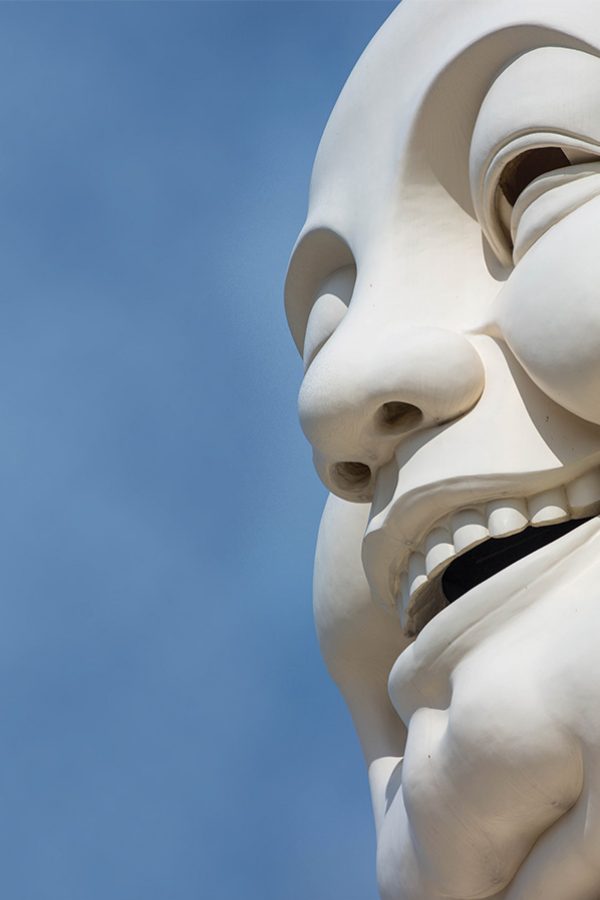
Credit: Goddard Photography/Getty Images
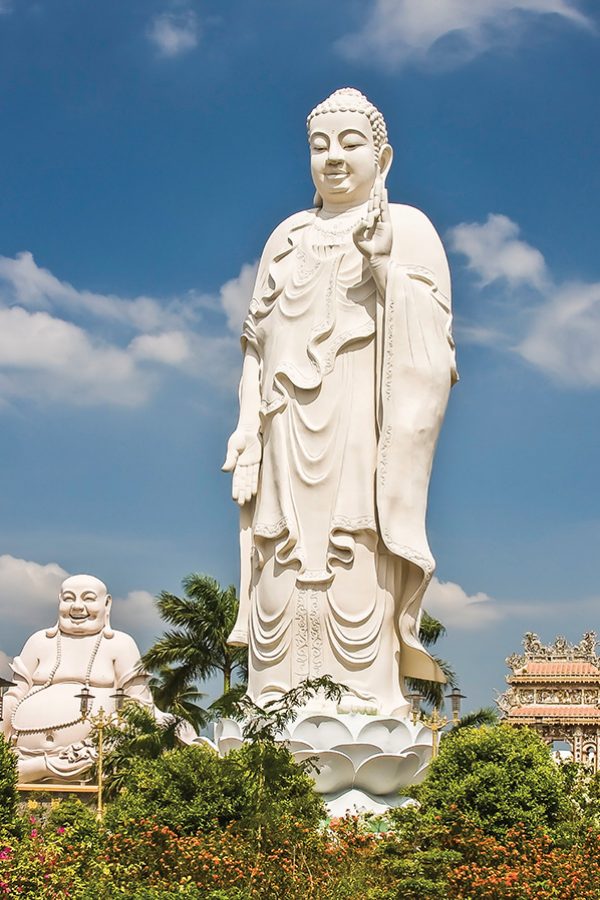
Credit: Andreas Rosei/Getty Images
5. Laughing Buddha, My Tho, Vietnam
About a 90-minute drive southwest of Ho Chi Minh City, the Vinh Trang Pagoda offers beauty at every turn, from majestic façades to vast manicured gardens and a trio of lustrous white Buddhas. There’s one standing Buddha, representing compassion and peace; one reclining, symbolising Buddha reaching Nirvana; and one sitting and laughing, embodying good fortune. If this happy statue makes you smile, you’re not alone. It depicts Budai (an eccentric wandering monk thought to have been the incarnation of the “Buddha of the Future”), who is said to have carried a sack full of treats for children and would spread joy wherever he roamed.
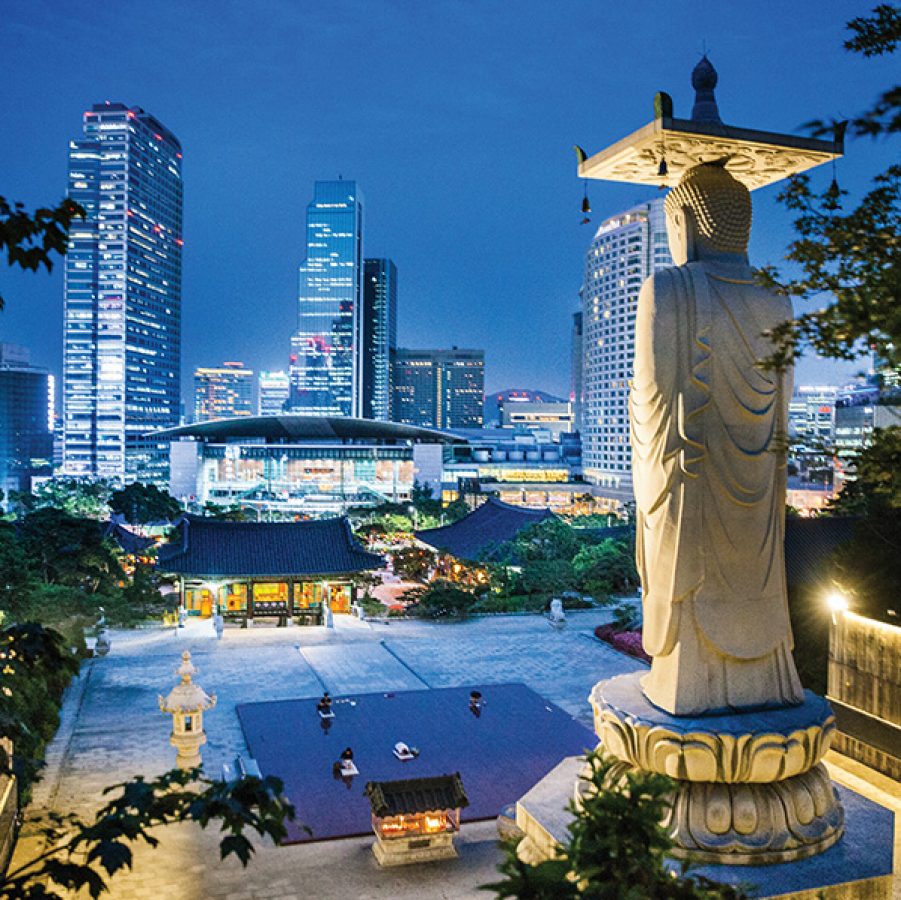
Credit: Leo Patrizi/Getty Images
6. Great statue of Maitreya Buddha, Seoul, South Korea
See another side of glitzy Gangnam at the quiet Bongeunsa Temple, established in 794 AD during the Silla Dynasty. It’s here that the Great Statue of Maitreya Buddha towers above the city. As the nation’s tallest stone statue, this 23-metre-tall standing Buddha is a picture of serenity, with one hand raised in a gesture representing peace and protection. While visiting the temple grounds, learn more about Korean Buddhist culture with an overnight stay and hands-on activities like meditation practices, monastic meals and tea ceremonies.
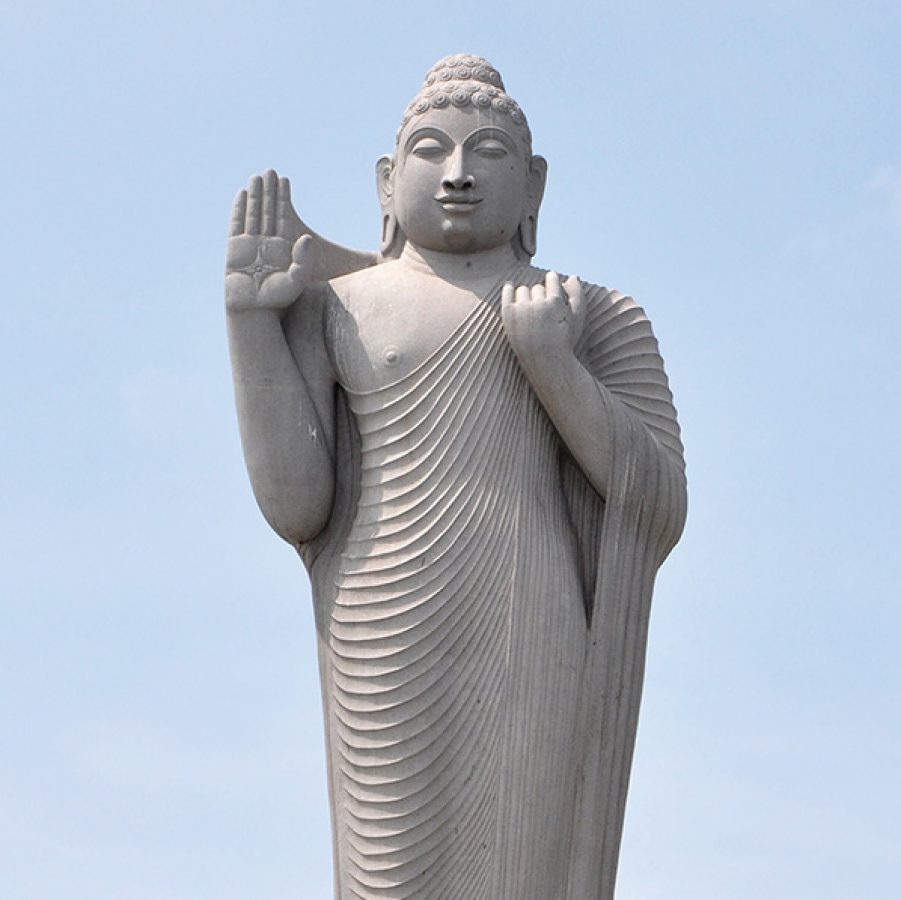
Credit: Leo Patrizi/Getty Images
7. Hussain Sagaar Buddha Statue, Hyderabad, India
Inspired by the Statue of Liberty, NT Rama Rao, who was then the Chief Minister of Andhra Pradesh, set out to build a similar landmark in Hyderabad. His vision? An 18-metre-tall solid granite Buddha standing on a beautifully carved platform in the middle of Hussain Sagar Lake. Admire it from the shores of the lake at Lumbini Park or take a 15-minute boat ride at sunset, when a neon light show illuminates the statue.
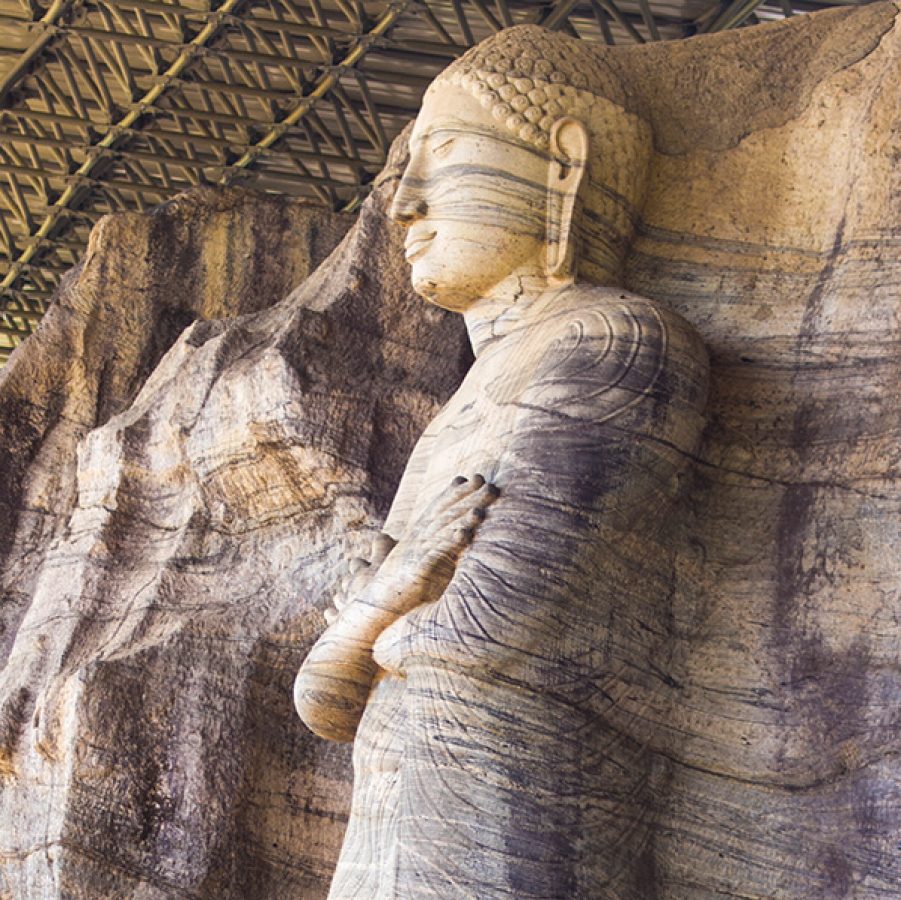
Credit: Davor Lovincic/Getty Images
8. Gal Vihara, Polonnaruwa, Sri Lanka
Travel back in time in the 12th-century city of Polonnaruwa, northeast of Colombo, where four Buddha statues carved from a colossal granite boulder await. Known as Gal Vihara, meaning “rock monastery”, the statues display different postures – seated, standing and reclining – representing the various stages of Buddha’s life. They’re also an excellent example of ancient Sinhalese sculpture and craftsmanship, thanks to subtle details in the facial expressions, flowing robes and spiritual motifs.
More inspiration
- China – the Chinese Mainland, Hong Kong SAR, Macao SAR and Taiwan Region
- Hong Kong SAR - English
- Chinese Mainland (China) - English
- Taiwan, China - English
- 香港特別行政區 - 繁體中文
- 中国內地 - 简体中文
- 中國台灣 - 繁體中文
- Africa
- South Africa - English
- Asia
- Bangladesh - English
- Korea - English
- Singapore - English
- Cambodia - English
- 한국 - 한국어
- Sri Lanka - English
- India - English
- Malaysia - English
- Thailand - English
- Indonesia - English
- Maldives - English
- ประเทศไทย - ภาษาไทย
- Indonesia - Bahasa Indonesia
- Myanmar - English
- Vietnam - English
- Japan - English
- Nepal - English
- Việt Nam - tiếng Việt
- 日本 - 日本語
- Philippines - English
- Australasia
- Australia - English
- New Zealand - English






